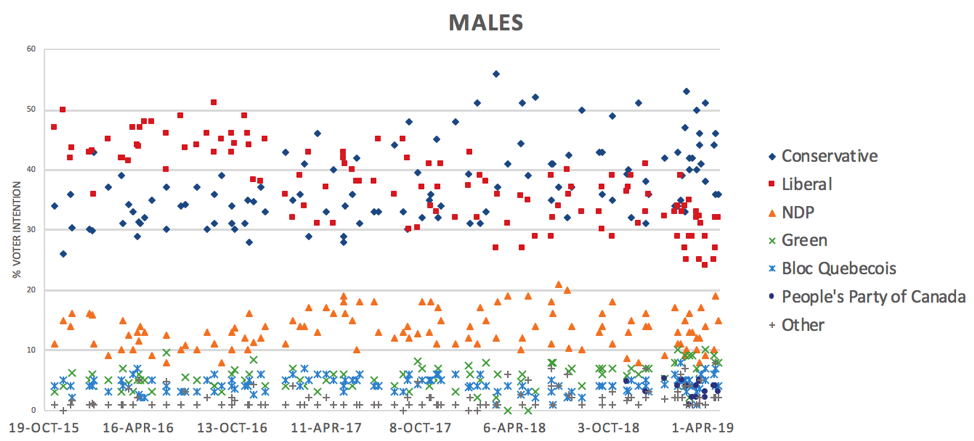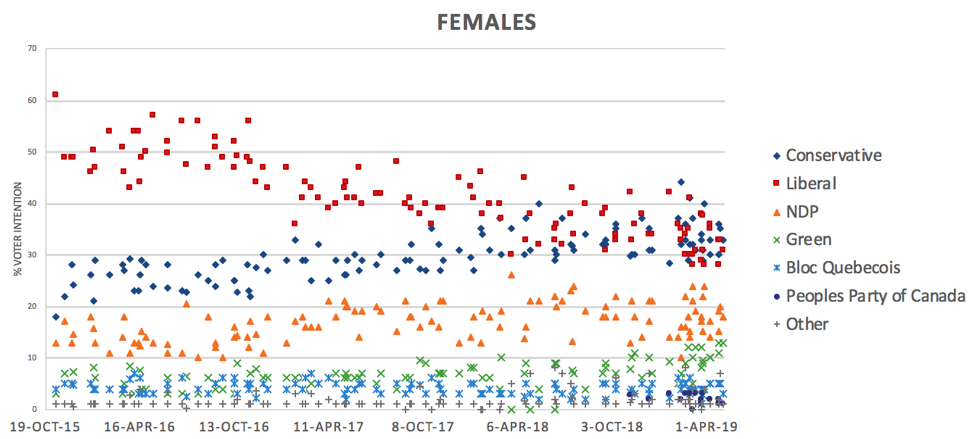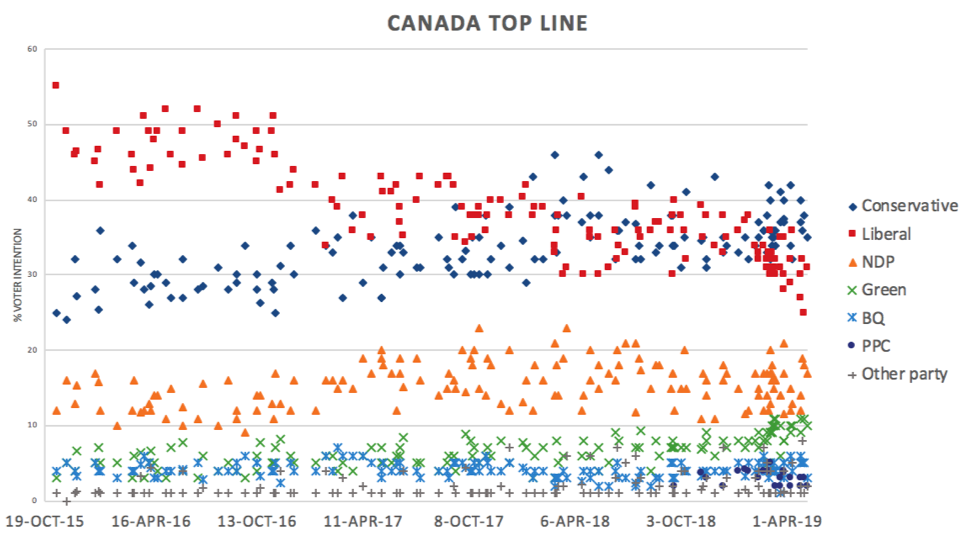By Natalie Pikulski
This blog series aims to analyze federal voting intentions of different demographic groups and compare how they fit or deviate from the national average. The first blog introduced the national trends and the second blog looked at trends among male and female voters. This blog will look specifically at age groups broken down by generation to see if the trends found in the previous demographic groups can be observed.
There was no consistency in age group breakdowns among polling organizations. Therefore, we created the following generation groups with the adjustments described in the table below.

Some firms had much larger age ranges than described above which would have skewed the results. We removed Ipsos age groups 34-54 and 55+ when creating the scatter plots as these year differences spanned more than one generation.
Among Gen ZY voters, the Liberal party was polling between 40% – 55% percent throughout 2016 while the Conservatives stayed around 20% – 30%. Considering that the parties began to overlap in some polls in mid-2018 at 25% – 40%, this was a significant fall for the Liberals and a substantial gain for the Conservatives which led to a tighter overlap in the two parties in 2019 with fewer outlier polls. The current overlap remains in mid-2019 but it appears Liberals are still slipping slightly, giving room for other parties to gain support.
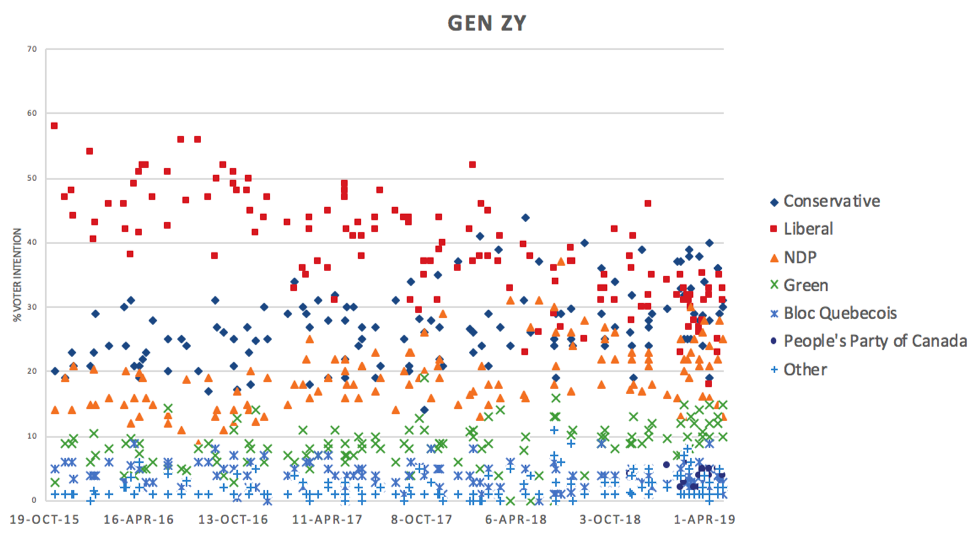
The NDP has been steadily increasing over the past four years among Gen ZY voters, polling between 15% – 30% in 2019, close to Conservative and Liberal levels. The Green Party polled much higher as well, reaching as high as 15% support in 2019. Compared to the national average, the falling trend in Liberal support is very similar but the Conservatives are polling much lower in Gen ZY while the NDP and Green are much higher.
The gap between the two top parties observed in Gen YX was smaller than in Gen ZY as the Conservatives initially polled higher and at a larger range (25%-40%) after the election up until early 2018. Liberal support was similar to the previous generation sitting at 40% – 55% for the post-election year and falling to 35%-45% in early 2017. Liberals began to overlap with the Conservatives until early 2019 where the Conservatives rose above to 30% – 40% while the Liberals fell to 25% – 35%. The NDP and Green party has stayed almost stable with a slight increase. The general trends in this age group are similar to the national averages.
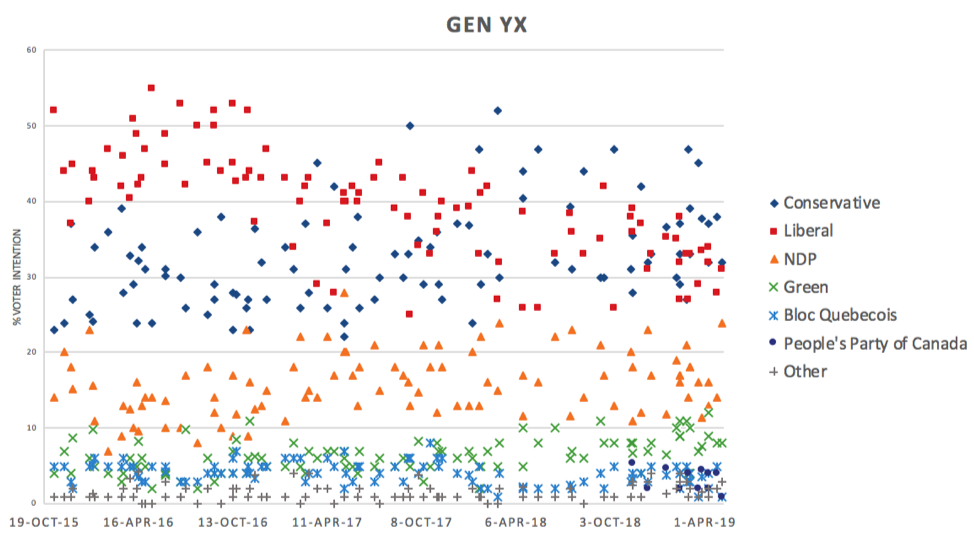
Gen X had results very similar to Gen XY having almost the same support percentage levels in terms of where the top two parties started after the election and began overlapping, the eventual Liberal downfall and Conservative rise in 2019, and stable NDP support falling between 10% – 20%. The general national trends can once again be observed in this age group but not as pronounced due to a much smaller sample size that was also the case in Gen XY.
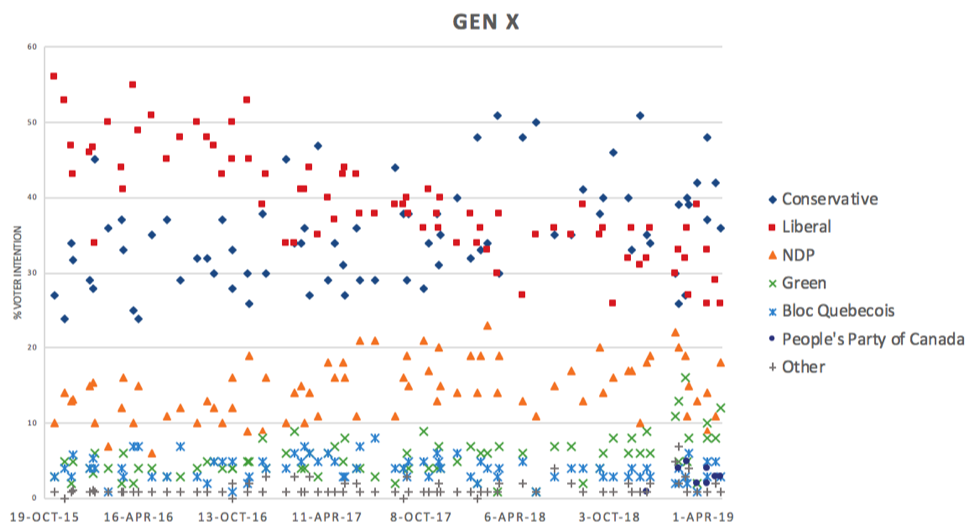
The gap between the Liberals and Conservatives in Young Boomers was quite significant and remained rather stable with the Liberals at 45% – 55% and Conservatives at 25% – 35%. This lasted until late 2016 where the Liberals rapidly declined to 35% – 45% support and the Conservatives rose to 30% – 40%. This support stayed rather stable for 2017 and 2018 with a slight overlap in some polls. The continuous slow rise of the Conservatives put the party ahead with 35% – 45% support in 2019 while Liberals had a sharp decline to 30% – 35%, likely due to the SNC-Lavalin scandal.
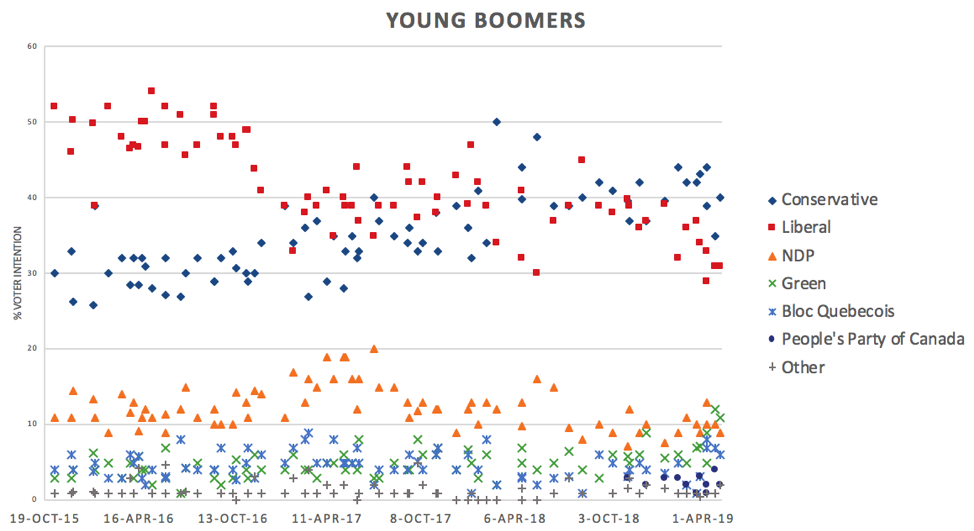
Apart from the two main parties, national trends are not really seen in Young Boomers as the NDP and Green Party are significantly lower in this demographic. The BQ also appears slightly higher compared to the national average and other age groups.
The Boomer age group had similar trends to Young Boomers with a distinct but smaller gap between Liberals (45% – 55%) and Conservatives (above 30%) in the first year, followed by a 2017-2018 overlap at 35%-45%. Unlike Young Boomers and the national average, the 2019 polls show less of a post SNC-Lavalin scandal Liberal drop, staying stable at 30% – 40%. However, it appears that Conservatives are still slightly ahead in the polls at 35% – 45% in early 2019.
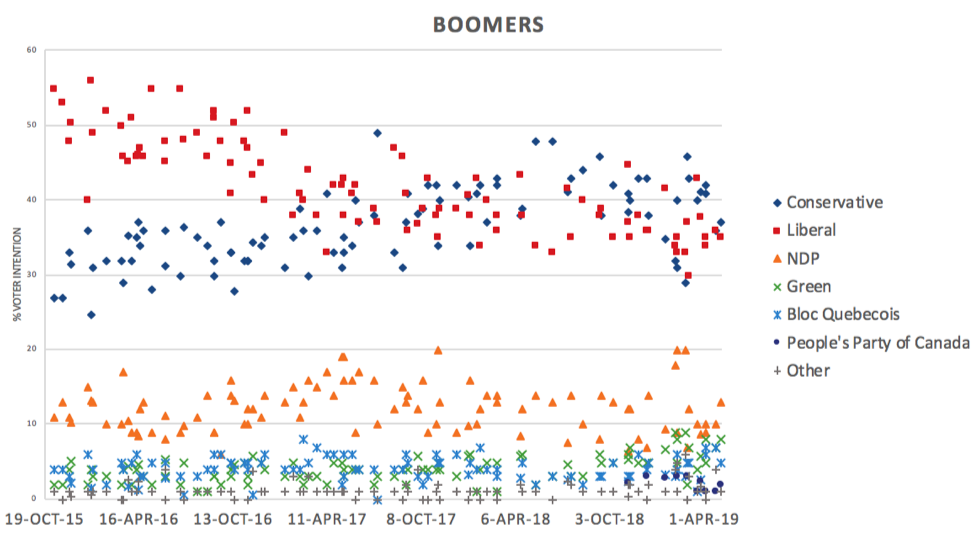
Compared nationally, the trend is very similar but the initial Liberal and Conservative gap in 2016 was tighter so the overlap occurred much sooner. Similar to Young Boomers, NDP and Green support is very low and appears to be significantly below the national average.
Moving into the election, it will be interesting to see how the different age groups change and if any parallels will be observed once again. Seeing the same trends over the last few demographic groups explored in the last three blogs will guide us into the fourth and final blog exploring different regions in Canada to see if these similar trends can also be observed.

